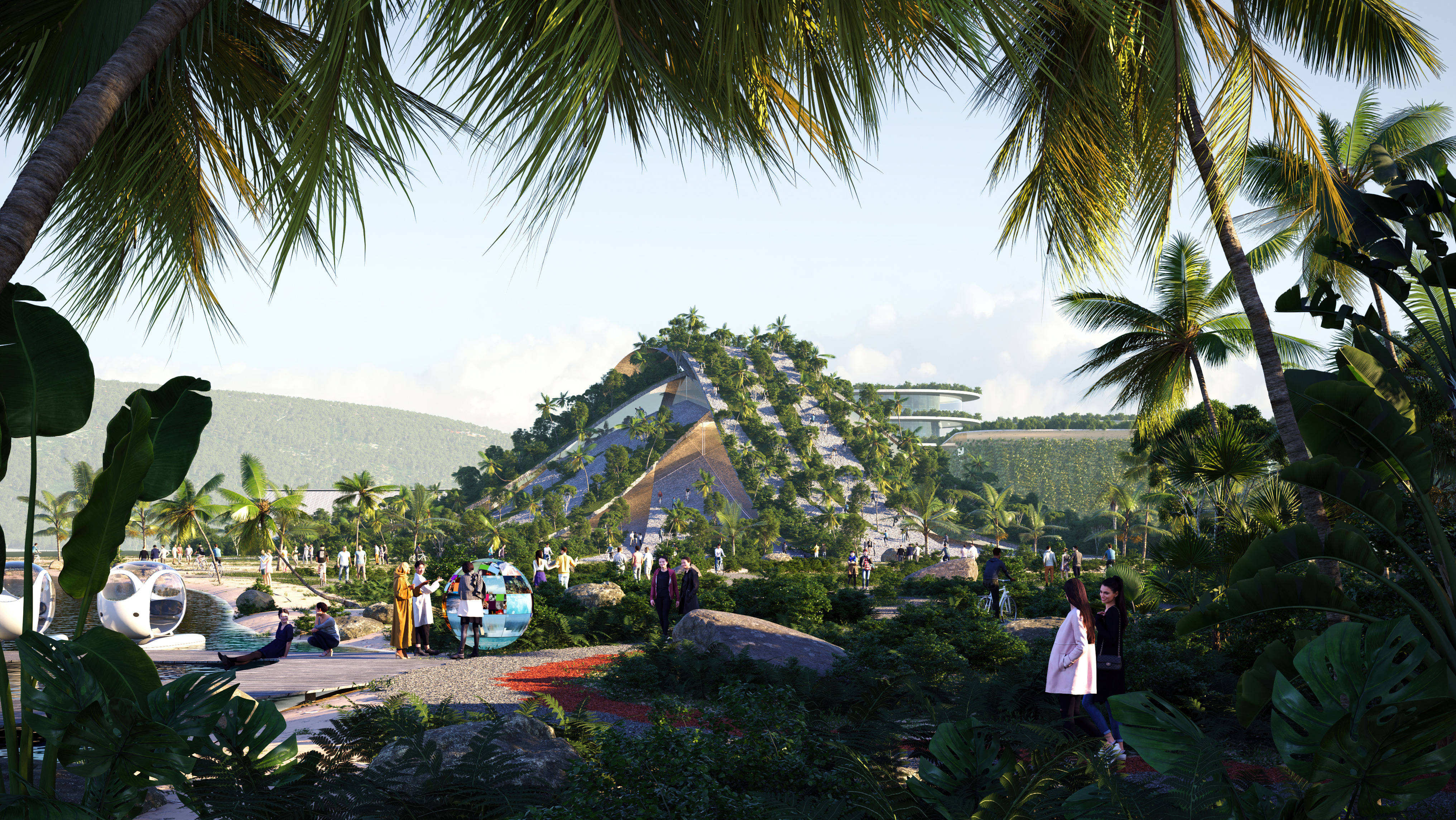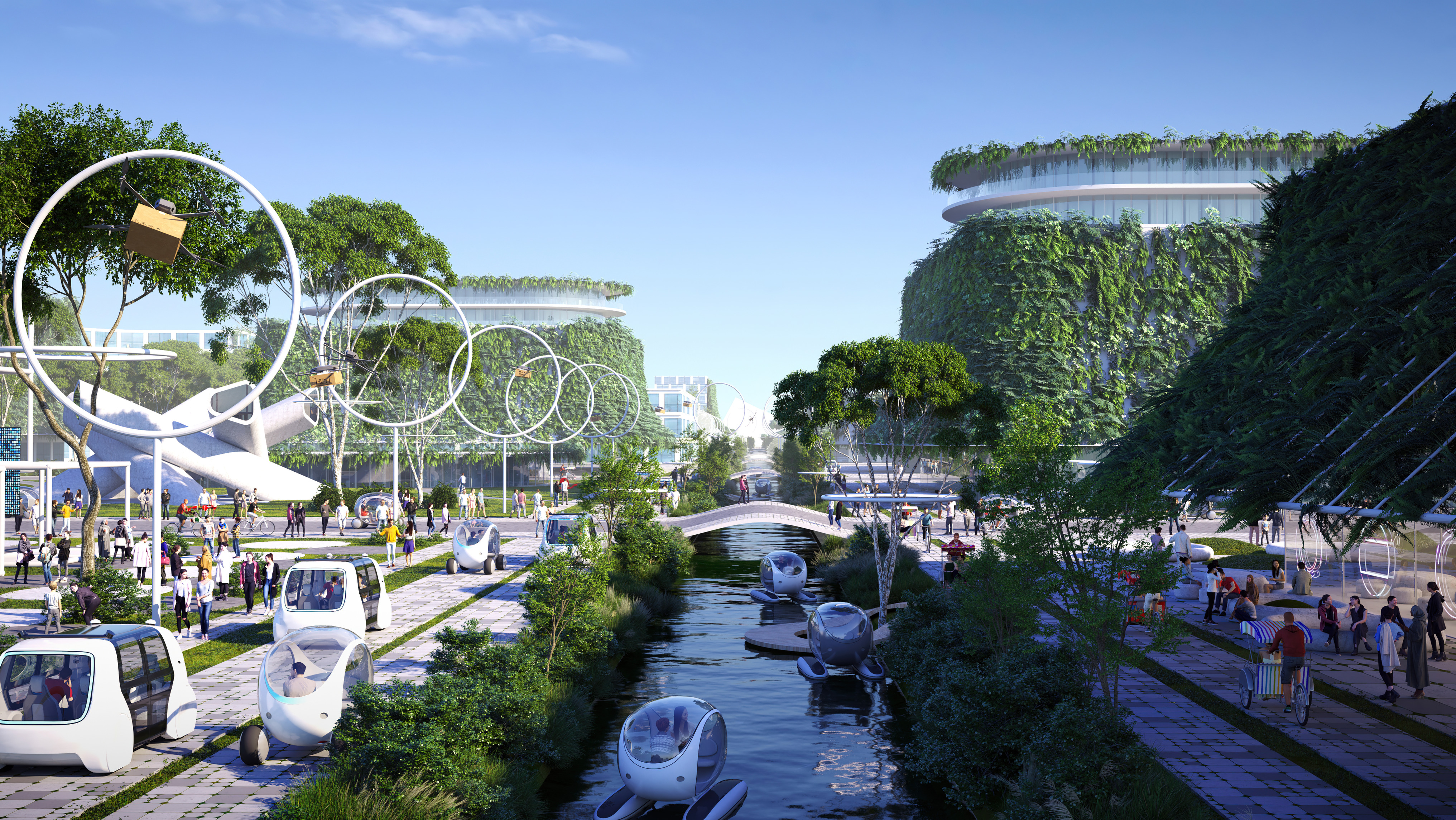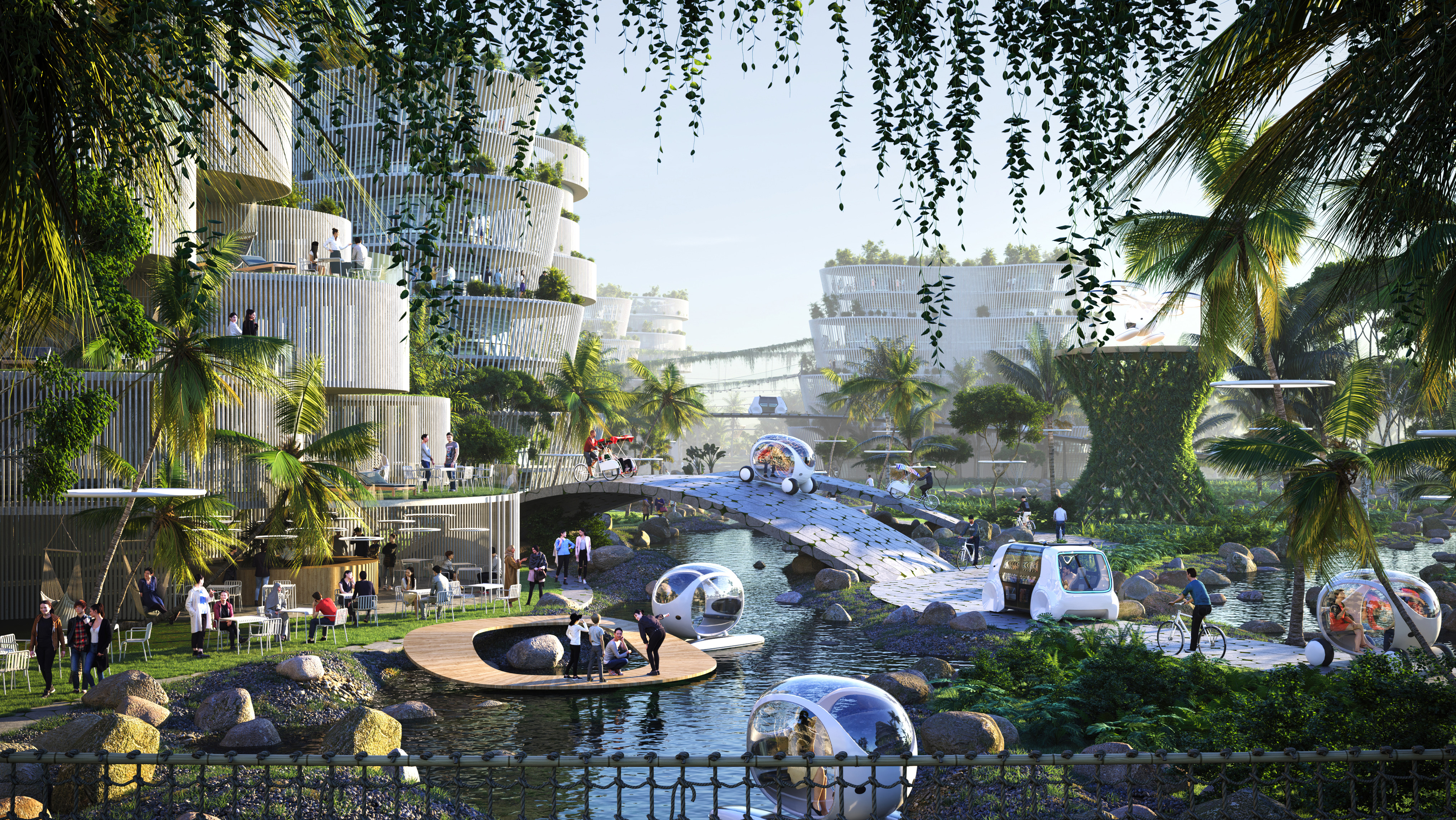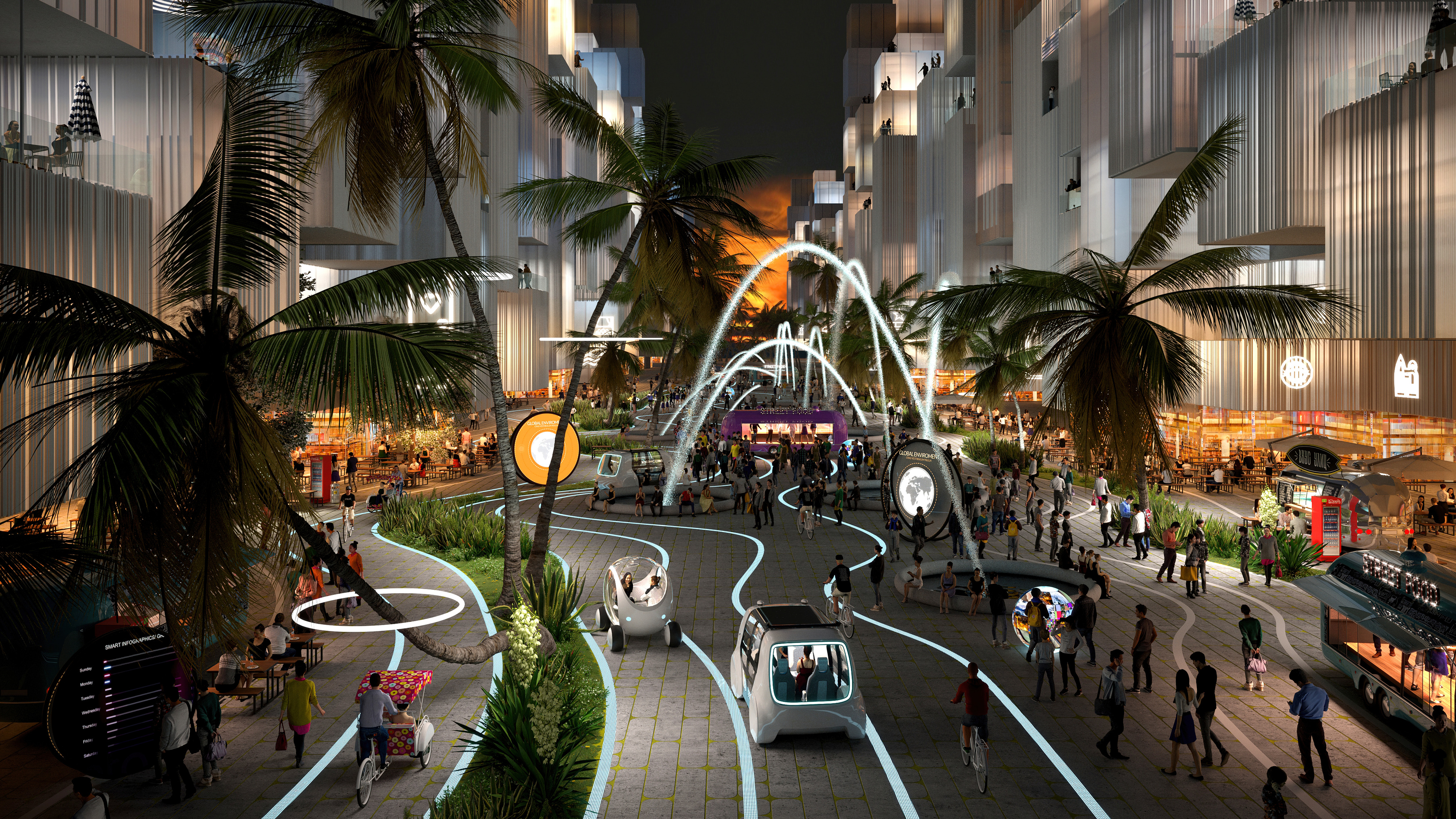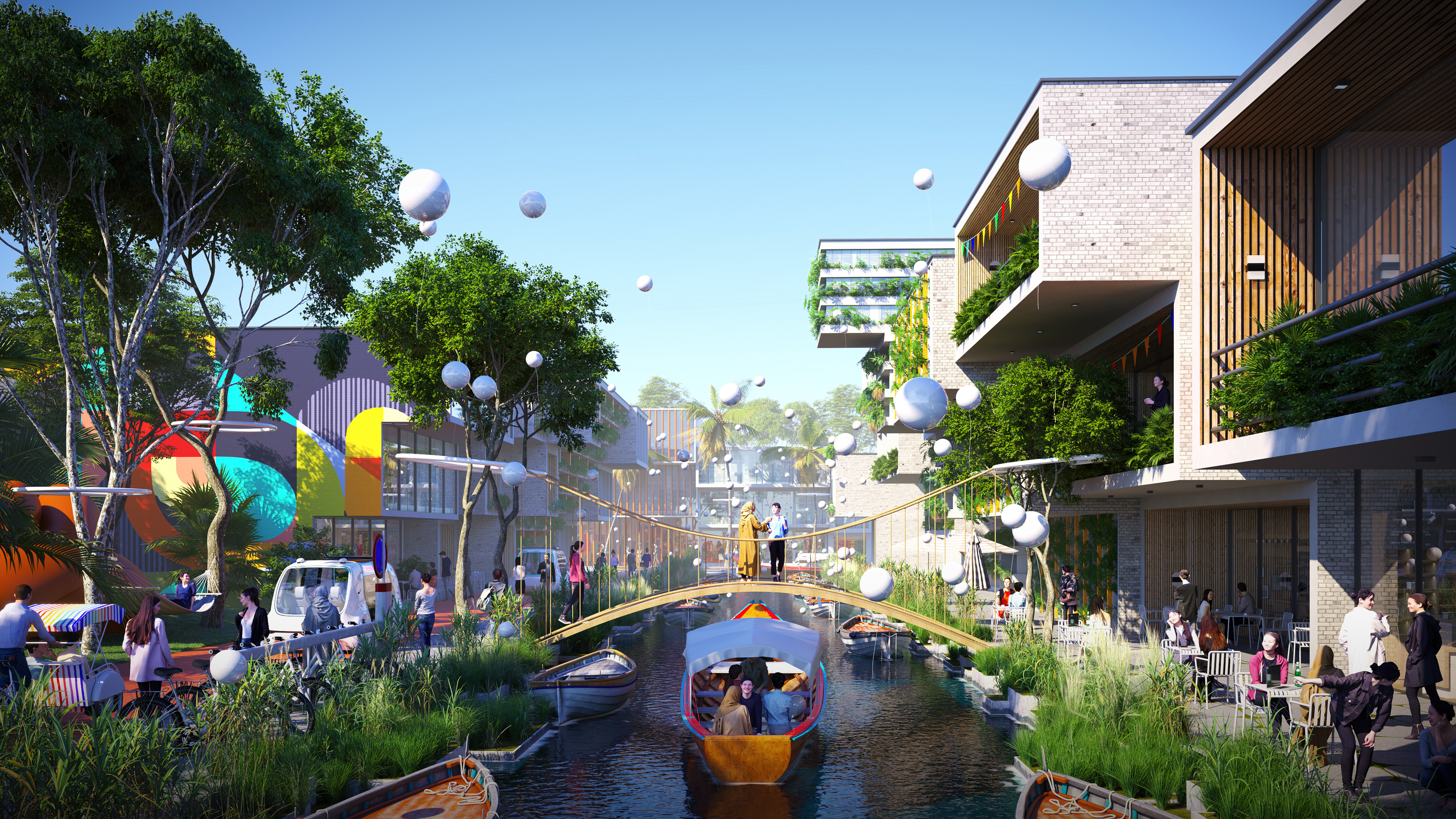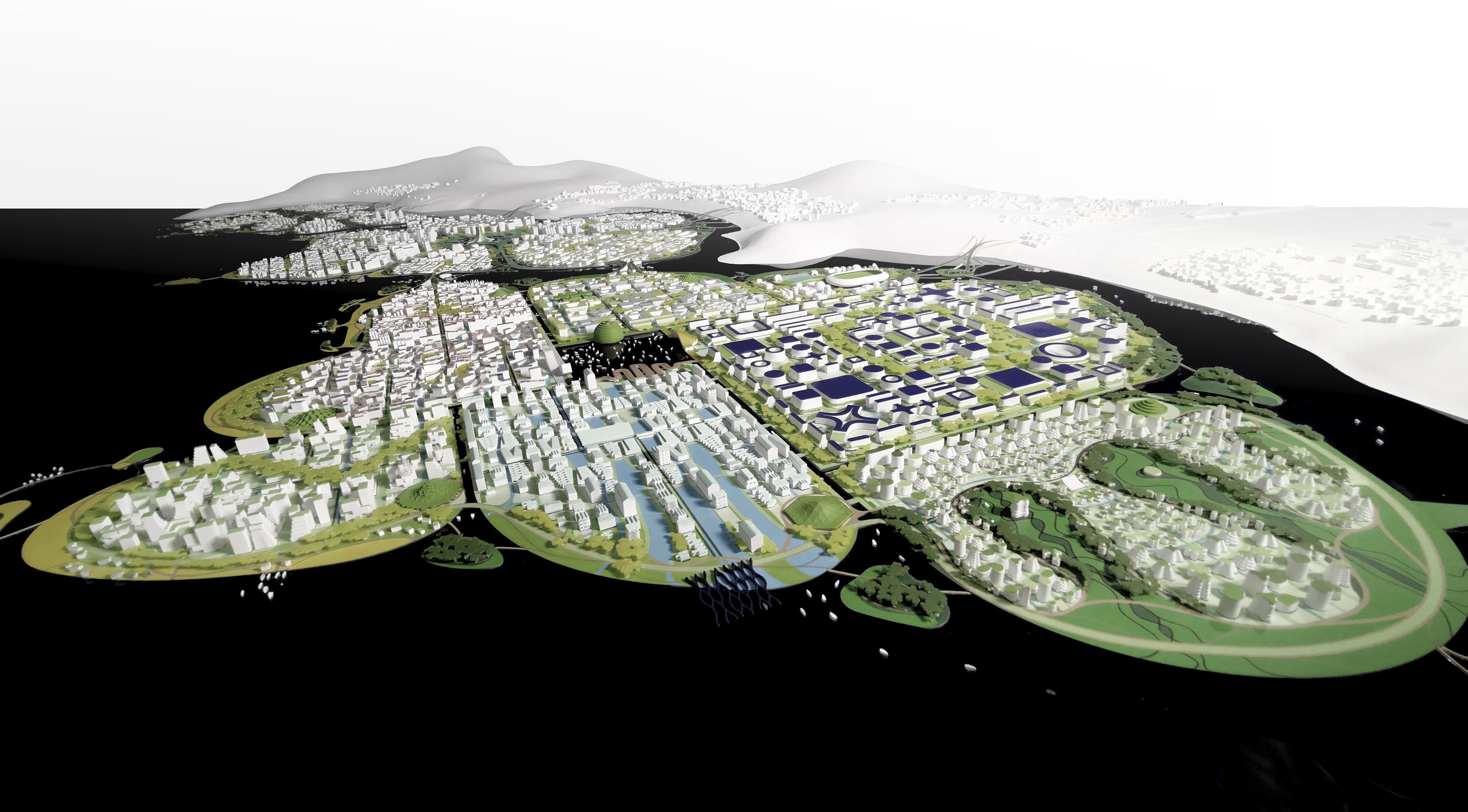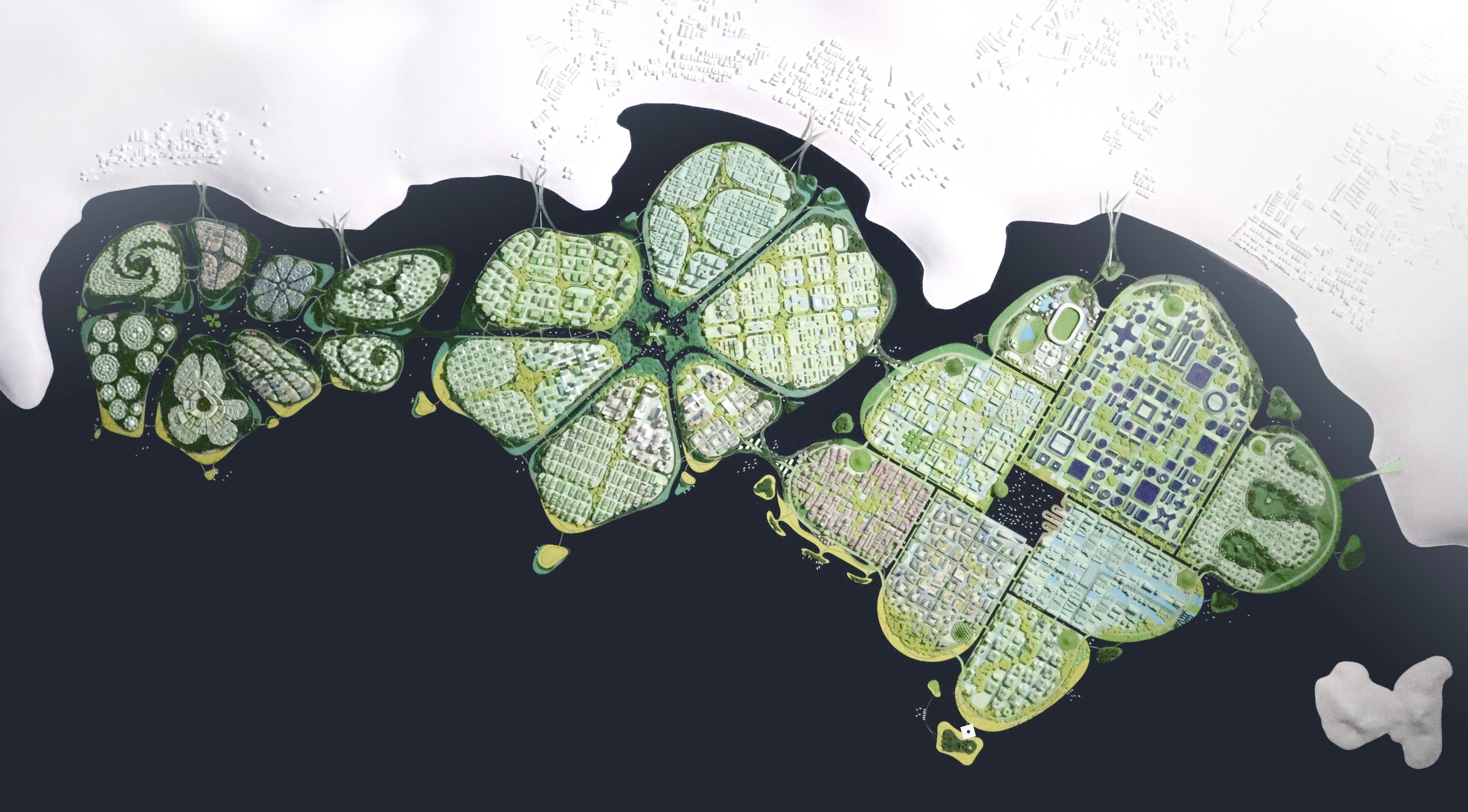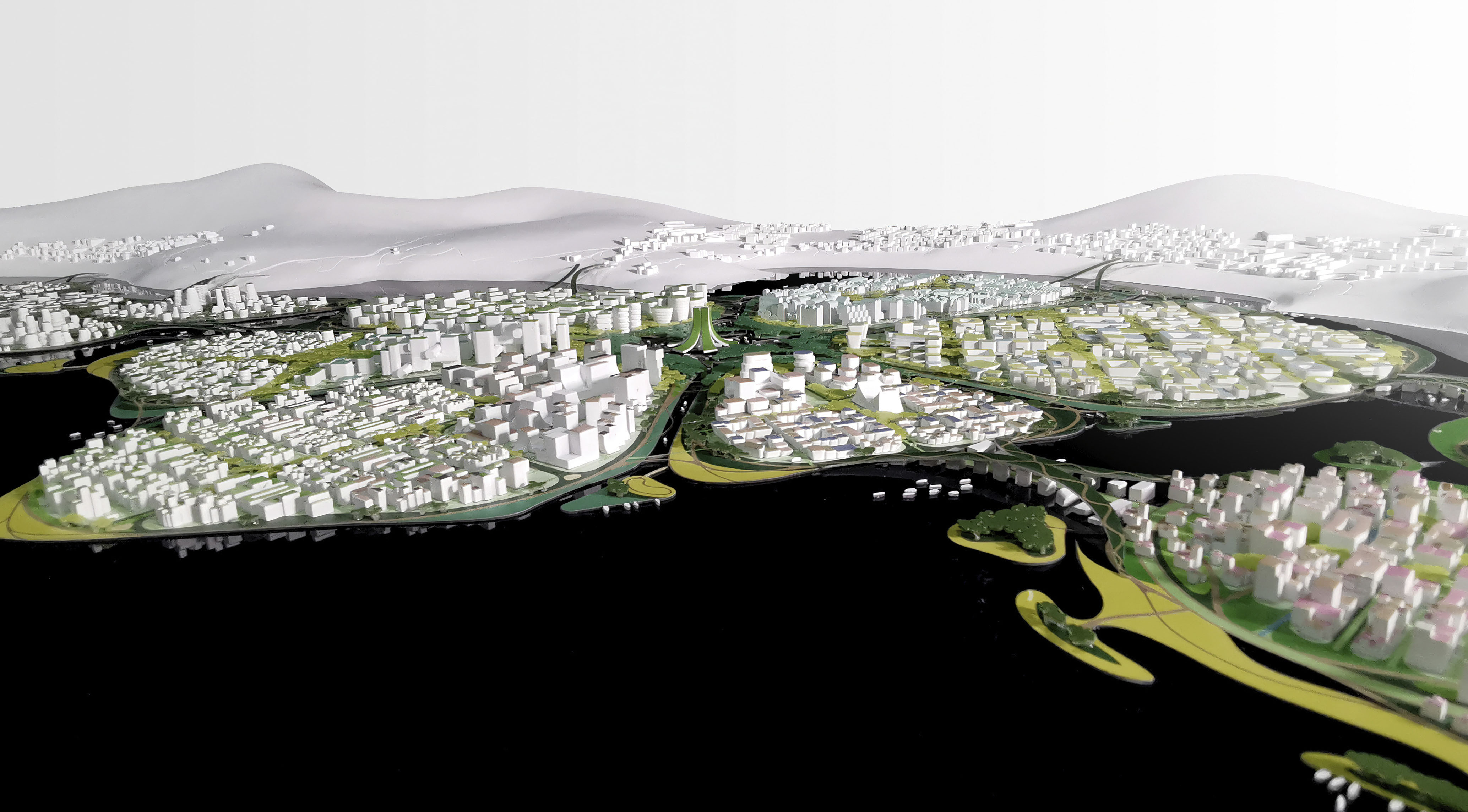STATUS
IDEA
PENANG, MALAYSIA
CLIENT
State Government of Penang, Malaysia
TYPOLOGY
Urbanism
STATUS
IDEA
SHARE
Malaysia is one of the most culturally and biologically diverse countries on Earth. Penang’s strategic location on the Malacca Strait, at the “Crossroads of the World,” is today a cosmopolitan hub for a variety of cultures and advanced manufacturing. For generations, Penangites, plants, and animals have coexisted, sharing resources where land and sea meet. However, the island’s dramatic topography and protected environment have increasingly begun to force new development into its coastal zones, disturbing natural habitats. These developments often lack diversity and soul, using nature as a fence rather than a link, often negatively impacting local communities and ecologies.
BIG’s masterplan BiodiverCity aims to expand human activity while not only preserving, but growing and strengthening habitats for all forms of life.
BiodiverCity proposes a manmade archipelago where natural habitats and human activity can coexist and thrive together. A place to secure economic, cultural, and ecological growth, marrying local sensibilities and global innovation.
A network of biologically-rich corridors and social destinations are interwoven to create a resilient and holistic approach that is responsive to the dynamics of water, accommodating diversity in communal experiences rooted within Malay heritage, and newly established BioHabitats.
Three diverse islands are conceived as urban lily pads, organized by a cellular structure of urban districts interspersed with, and connected by, natural patches and corridors for habitat.
“At the south-end of Penang Island, BiodiverCity’s ecologically diverse landscape promotes co-existence with natural elements while giving ground for communal experiences rooted within Malaysian heritage. A network of biologically rich islands is scaled and programmed to accommodate diversity in social experiences for Penangites and newly established habitats for native plant and animal species.”
The Channels, BiodiverCity’s first island, is constructed in 3 distinct and complementary phases, each supporting the next: in Phase 1, Active Destinations, including a wave garden and technology park, bring early footfall and revenue to the development; in Phase 2, a Civic Heart establishes governance and research institutions in the area; and in Phase 3, a Cultural Coast builds upon the heritage and vibrant creative energy of Georgetown to create a regional and international draw. These all come together in the Blue Plaza, the aqueous heart of the island.
“BiodiverCity will have an integrated system of localized water resources, renewable energy and waste management, tied altogether in a human-made ecosystem. Rather than design a city for cars, we designed BiodiverCity for waterways, rail and different kinds of personal mobility, forming a multi-modal environment of movement. The resultant urban landscape will be a celebration of Penang's position as a truly global crossroads of the world - economically, ecologically and socially.”
The Mangroves, BiodiverCity’s second and central island, is organized around a network of sheltered urban wetlands, providing the perfect environment for its namesake Mangrove forests – a super-rich habitat that sequesters more than 5 times as much carbon as typical forest. If the Channels are an island for Making, the Mangroves build on this focus to become an Island for Thinking, with a focus on business and services. In the center of the island, the Bamboo Beacon hosts meetings, conferences, and major events – broadcasting the knowledge and know-how developed in BiodiverCity out to the world.
Districts are efficiently connected below the BioPlatform’s surface to increase the efficiency of goods, services, and regional mobility, while maximizing pedestrian safety throughout the public realm. Above-ground streets not only move people, but also serve as BioMobility corridors for plants and animals. Urban space is shared, layered, and connected throughout each island.
A water, air, and land based autonomous public transportation network ensures a personalized 360-degree approach to mobility. BioProgramming promotes an interactive and mixed-use public interface. BioBuildings are designed to perform, clad in living facades that shade and covered in productive rooftops that capture and grow on-site BioResources: water, energy, and food.
The Laguna, BiodiverCity’s westernmost island, is an oasis for ecological living, organized around a central marine heart. 8 smaller islands form a miniature archipelago, where floating, stilted, and terraced housing takes advantage of the spectacular natural setting of Tanjung Gertak Sanggul.
The Penang BiodiverCity will be a cultural, economic, and ecological capital for Malaysia, Southeast Asia, and the globe. An extension that celebrates both the heritage and innovation that characterize Penang, and a home for growing economies, growing communities, and growing ecologies, at the ‘Crossroads of the World’.
Bjarke Ingels Kai-Uwe Bergmann Daniel Sundlin Leon Rost Alan Fan Christian Cueva Guillaume Evain Isabella Marcotulli Jamie Maslyn Larson Lingyi Xu Veronica Acosta Mateo Fernandez Max Moriyama Nasiq Khan Piotr Zalewski Sang Ha Jung Shane Dalke Stephanie Mauer Terrence Chew Thomas McMurtrie Tracy Sodder Won Ryu Bella Yanan Ding Yao Tong Yi Lun Yang Autumn Visconti Christopher Pin Jeffrey Shumaker Jeremy Alain Siegel Einat Lubliner Jordan Felber Mike Munoz Jennie Peng Isa Akerfeldt-Howard Casper Clausen Montre'ale Jones
Hijjas
Ramboll
Web Structures
Web Em
Ernst & Young
Knight Frank
KPK
Green Growth Asia Foundation
Universiti Teknologi Mara
Lucian R
